To compare the Huber function with the least squares measure, we generate a
synthetic CMP gather (Figure 2) that we perturb by introducing: (1) missing traces,
(2) a low velocity aliased plane wave, and (3) some sparsely distributed spiky noisy events.
These data sets constitute the input for the iterative schemes (![]() for each result).
The panels display the model space on the left (after 20 iterations), and the data space on the right.
The bottom right panels show the modeling of the last velocity result.
All these results (Figures 4, 6,
8) prove the following: outcome of the Huber solver is
insensitive to spiky events, like a pure l1 norm misfit function. The outcome of the missing
data problem was probably less predictable, but again, Huber copes more easily with the
inconsistency introduced in the data.
for each result).
The panels display the model space on the left (after 20 iterations), and the data space on the right.
The bottom right panels show the modeling of the last velocity result.
All these results (Figures 4, 6,
8) prove the following: outcome of the Huber solver is
insensitive to spiky events, like a pure l1 norm misfit function. The outcome of the missing
data problem was probably less predictable, but again, Huber copes more easily with the
inconsistency introduced in the data.
|
datamodel
Figure 2 Left: ideal velocity panel. Right: data model. |  |
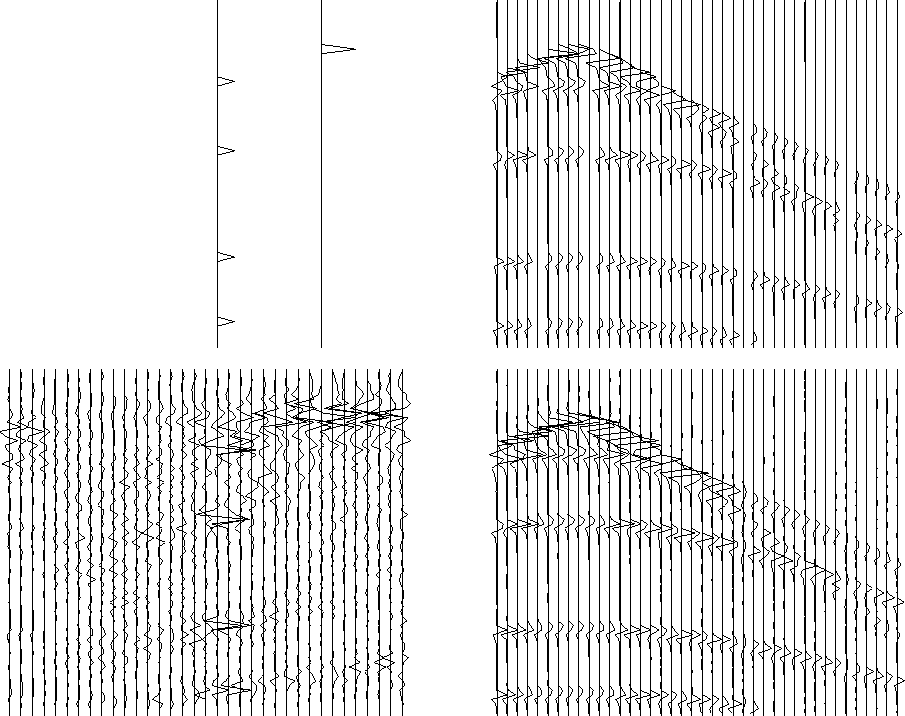 |
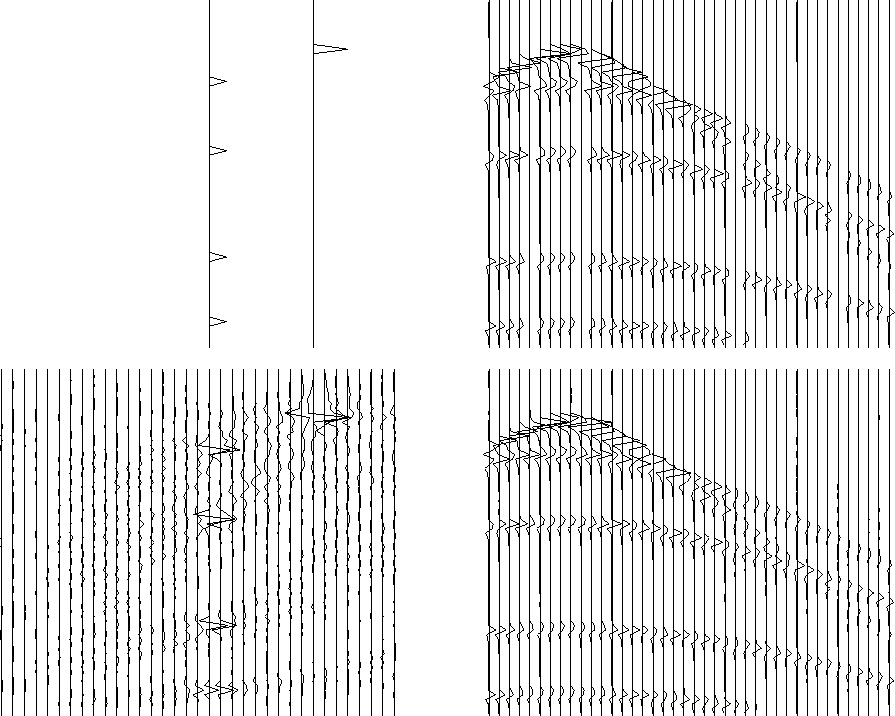 |
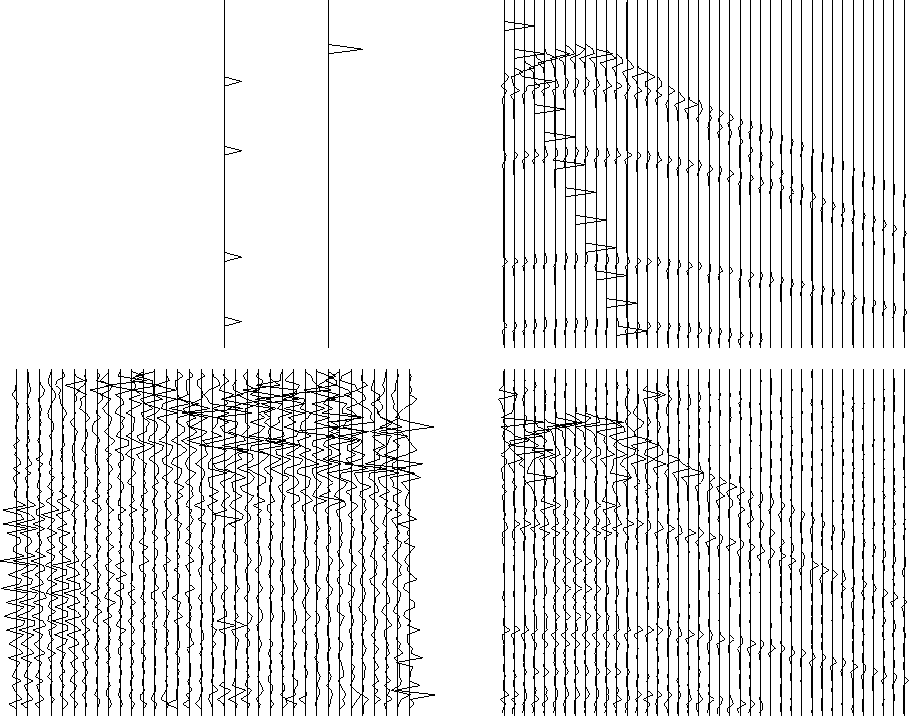 |
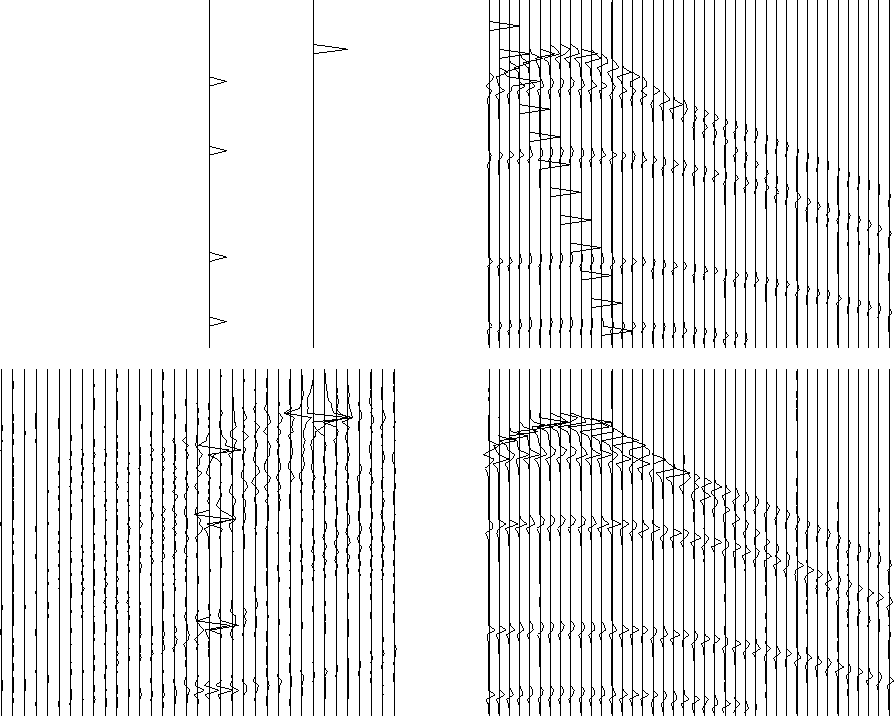 |
 |
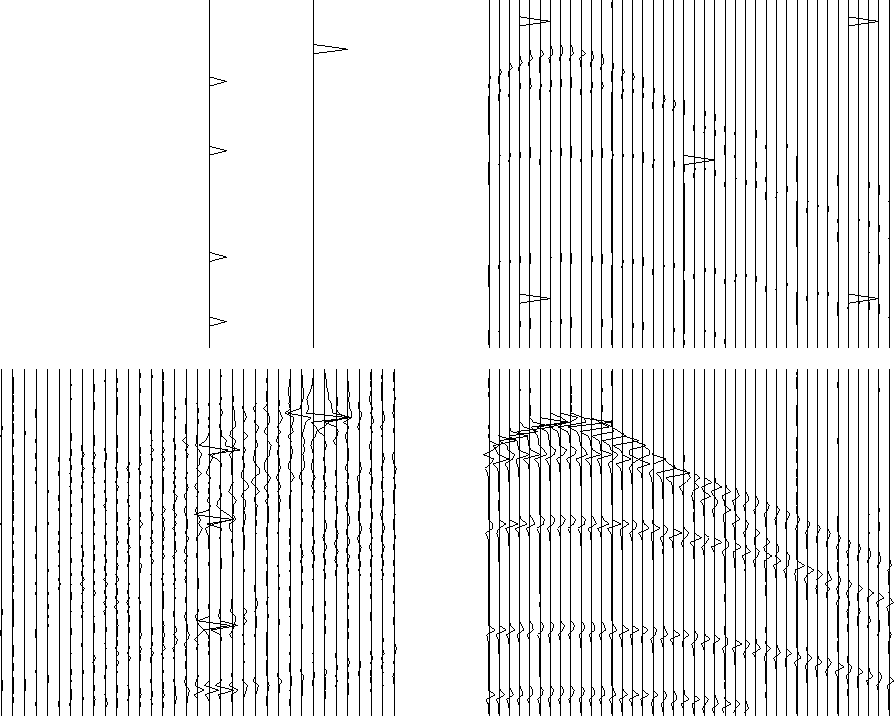 |